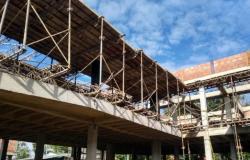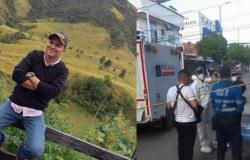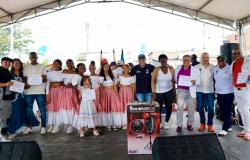The Galleon San José, sunk in 1708 off the coast of Cartagenais considered one of the most important shipwrecks of the colonial period in America.
The decision, announced by the Minister of Culture, Juan David Correa, from the Caribbean Naval Base in Cartagena, marks the beginning of an intensive phase of scientific research and preservation of the emblematic galleon.
«Towards the heart of the San José Galleon»
Minister Correa presented the first phase of the project “Towards the heart of the San José galleon”, which will involve carrying out preliminary investigations and collecting images of the site.
“We are going to set sail very soon to carry out the first investigations, collect images and study the behavior of the sea,” Correa explained.
He highlighted that minimal extractions will be carried out to analyze the conservation of the materials.
The main objective is to value the discovery of the San José Galleon as a key piece of Colombian history, promoting its long-term conservation and encouraging research and cultural dissemination activities.
According to the Ministry of Culture, These actions will allow a detailed study of the shipwreck, contributing to the cultural enrichment of the country.
It may interest you: The story of the complaint against former president Juan Manuel Santos for alleged looting of the San José galleon
Protected area and planned actions
The protected area covers archaeological evidence of the galleon in deep waters of the Caribbean Sea. The declaration is based on criteria of representativeness, uniqueness and integrity, underlining the high scientific and heritage value of this site.
In the first phase of the project, Images of the site will be generated using remote sensors to perform a non-intrusive diagnosis.
These images will allow us to build an inventory of the archaeological evidence on the seabed and classify the materials according to their origin.
In addition, a conservation pre-diagnosis will be carried out to evaluate the condition of the identified elements.
Use of robotics
The research will also consider the use of advanced technologies such as robotics and dynamic and acoustic positioning systems.
An underwater research vessel, equipped with a remotely operated vehicle, will digitally document the archaeological context, including georeferenced film, photographic and photogrammetric records.
You may also like: The Galeón San José, according to Gabriel García Márquez: what is their relationship?
At the launch of the project, Representatives of the Qhara Qhara indigenous nation of Bolivia were presentwho claim that part of the sunken treasure comes from minerals extracted from Cerro Rico de Potosí.
This community has requested that a sample of the wreck be taken to Bolivia, while the rest be kept in a museum for preservation.






